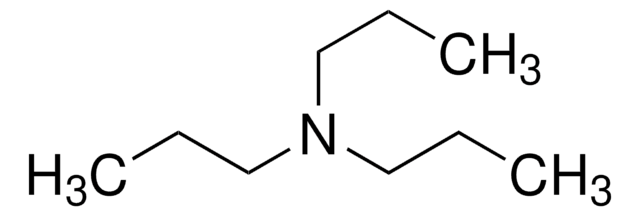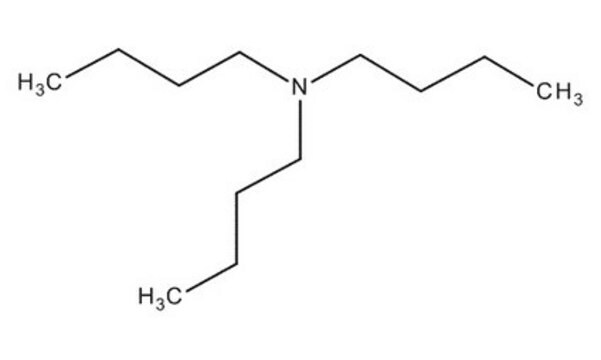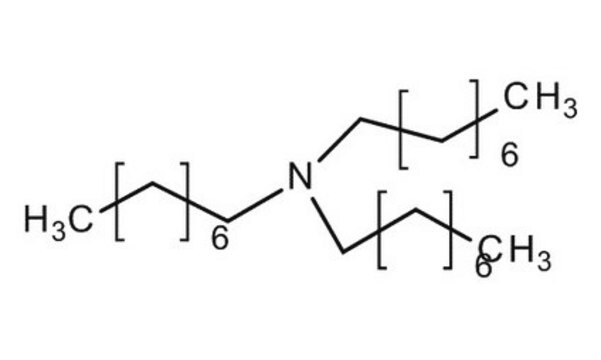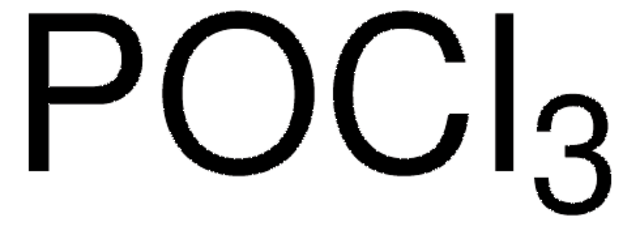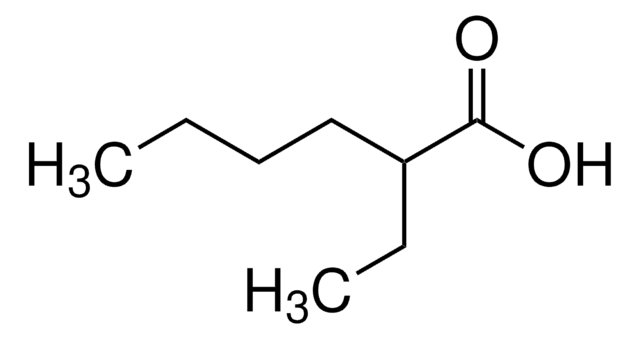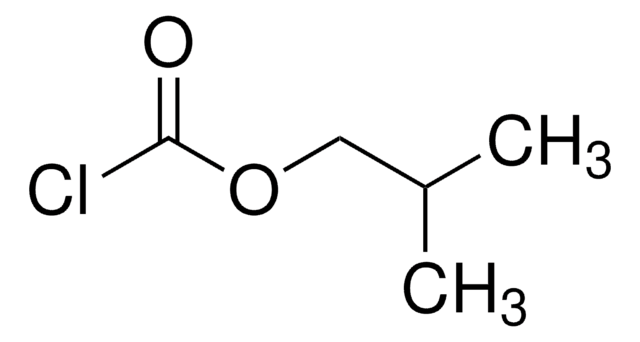Kluczowe dokumenty
471313
Tributylamine
≥98.5%
Synonim(y):
Tri-n-butyloamina
About This Item
Polecane produkty
gęstość pary
6.38 (vs air)
Poziom jakości
ciśnienie pary
0.3 mmHg ( 20 °C)
2.4 mmHg ( 55 °C)
Próba
≥98.5%
Formularz
liquid
temp. samozapłonu
410 °F
granice wybuchowości
6 %
współczynnik refrakcji
n20/D 1.428 (lit.)
pH
10.2 (25 °C, 0.1 g/L)
bp
216 °C (lit.)
mp
−70 °C (lit.)
gęstość
0.778 g/mL at 25 °C (lit.)
ciąg SMILES
CCCCN(CCCC)CCCC
InChI
1S/C12H27N/c1-4-7-10-13(11-8-5-2)12-9-6-3/h4-12H2,1-3H3
Klucz InChI
IMFACGCPASFAPR-UHFFFAOYSA-N
Szukasz podobnych produktów? Odwiedź Przewodnik dotyczący porównywania produktów
Opis ogólny
Zastosowanie
- An extraction solvent with CHCA (α-cyano-4-hydroxycinnamic acid) for the selective phospholipids (PLs) extraction from EVOO (extra virgin olive oil) and HO (hazelnut oil).
- A hydroxylating agent in the synthesis of spinel nickel ferrites (NiFe2O4) nanoparticles (NPs).
Cechy i korzyści
Hasło ostrzegawcze
Danger
Zwroty wskazujące rodzaj zagrożenia
Zwroty wskazujące środki ostrożności
Klasyfikacja zagrożeń
Acute Tox. 1 Inhalation - Acute Tox. 2 Dermal - Acute Tox. 4 Oral - Skin Irrit. 2
Kod klasy składowania
6.1A - Combustible acute toxic Cat. 1 and 2 / very toxic hazardous materials
Klasa zagrożenia wodnego (WGK)
WGK 1
Temperatura zapłonu (°F)
145.4 °F - closed cup
Temperatura zapłonu (°C)
63 °C - closed cup
Wybierz jedną z najnowszych wersji:
Masz już ten produkt?
Dokumenty związane z niedawno zakupionymi produktami zostały zamieszczone w Bibliotece dokumentów.
Klienci oglądali również te produkty
Nasz zespół naukowców ma doświadczenie we wszystkich obszarach badań, w tym w naukach przyrodniczych, materiałoznawstwie, syntezie chemicznej, chromatografii, analityce i wielu innych dziedzinach.
Skontaktuj się z zespołem ds. pomocy technicznej
